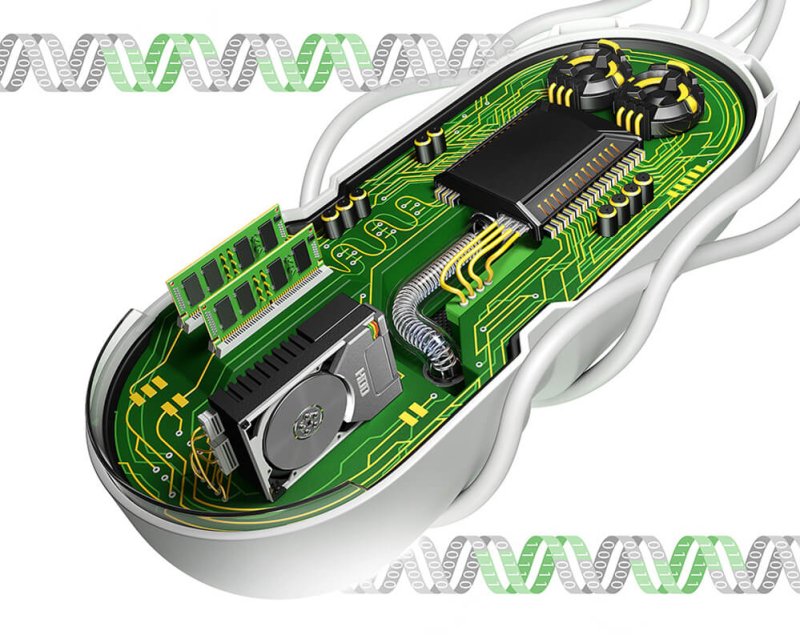Synthetic biology—the creation of new complex molecules, cells or physiological functions—is a hot, promising new area for biotechnology and medical research. Now, as a few inventions have made their way from the laboratory to (almost) the marketplace, discussions are heating up about how synthetic biology should be regulated.
The Woodrow Wilson International Center, which is more of a policy influencing organization than a scientific one, issued a report very recently that pointed to three types of synthetic biology that the authors contend are—or will be—confusing under current federal regulations of plants, food, consumer products and genetically modified ingredients:
- Squalene, a softener used in lotions and other products, has been derived from shark liver oil for at least 25 years. Manufacturing has been problematic because it involves several steps of distillation, hydrogenation and purification, and because the sharks from which livers were taken were often endangered species. But two years ago, the firm Amyris announced it had produced a synthetic version, produced from sugars created by a number of yeast strains. So, the Wilson writers ask, is the new synthetic squalene to be regulated by FDA without premarket review, and is it even chemically the same as shark-derived squalene?
- PBAN, short for Pheromone Biosynthesis Activating Neuropeptide, is usually produced by insects to trigger females to produce male-attracting pheromones. A group of students from Taiwan created a synthetic PBAN that is produced in E. coli is placed in a trap, inducing pheromone production among female moths in the trap. This pheromone production also traps attracted males, creating a substance that isn’t a pesticide by itself, nor is produced naturally, but does ultimately capture moths. The authors warn that here, “The same substance can potentially be subject to Toxic Substances Control Act, Federal Insecticide, Fungicide and Rodenticide Act, or Federal Food, Drug, and Cosmetic Act depending on the intent and use of the technology at issue.”
- Copper mining involves extraction of the metal by running very acidic liquids through crushed rock, and then capturing the freed copper. This process is expensive, requires a lot of hazardous chemicals, and isn’t very efficient. Lately, some mining companies have turned to microbes to aid in the extraction process. A company (which was unnamed in the report) plants to design novel microorganisms to increase the solubility and extraction of copper from ore that, using current technology, could not be extracted. The company plans to modify these microbes’ genes to increase their efficiency in extracting copper (not to mention surviving in an acidic environment). To the Wilson writers, this innovation shows a regulatory gap, because of the genes modifying the microbe are from the same genus (right now, the gene identifies are confidential), they’re not regulated.
Not everyone shares The Wilson Institute’s sense of regulatory gaps. In 2014, a group from the J. Craig Venter Institute had a different perspective:
The U.S. regulatory agencies have adequate legal authority to address most, but not all, potential environmental, health and safety concerns posed by anticipated near-term microbes, plants, and animals engineered using synthetic biology. Such near-term projects are likely to represent incremental changes rather than a marked departure from previous genetically engineered organisms.
The Venter Institute writer did identify two areas that may need some regulatory tweaking:
- Genetically engineered organisms that are developed so that they lie outside of USDA’s Animal and Plant Health Inspection Service (commonly APHIS), because they are not plant pests or a component of a plant pest (the Wilson Institute writers cited an example of this, too). “This shift will leave many engineered plants without regulatory review prior to their cultivation in the environment for field trials or commercial production,” the authors observed.
- Synthetic biology will ultimately overload the US Environmental Protection Agency’s Biotechnology Program, as larger numbers and types of microbes will be sent to the agency for review. The complexity of these microbes will also require more sophisticated risk assessments.
However, the Venter Institute writers offered options that did not necessarily require a drastic overhaul of federal regulations of food, drugs, consumer products or genetic modification.
The White House has started a review of the set of agreements among regulators (USDA, FDA, and EPA, primarily) set in 1986 as the Coordinated Framework, so see if any rules needed to be created, abandoned, or revised. Part of this overview may include reassigning certain oversight depending on how a certain innovation is classified. Today’s “plant pest” may not be tomorrow.
And it may not matter. At least in the United States, genetic modifications are evaluated according to their ultimate effect; that is, if they have a significant change in the ingredient of a food, drug or pesticide. And not how it’s made.
Andrew Porterfield is a writer, editor and communications consultant for academic institutions, companies and non-profits in the life sciences. He is based in Camarillo, California. Follow @AMPorterfield on Twitter.































